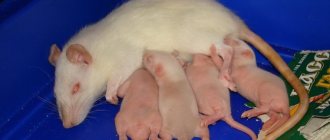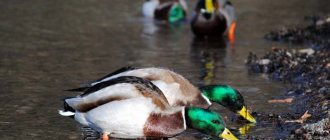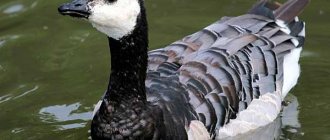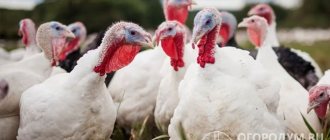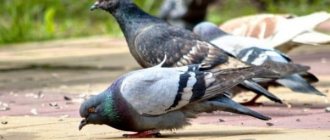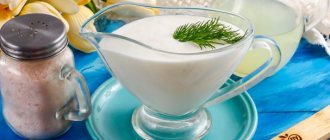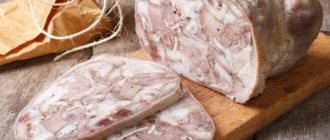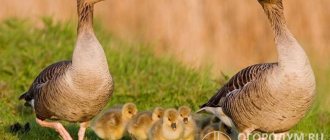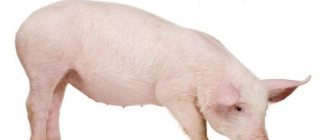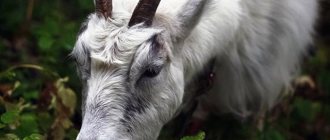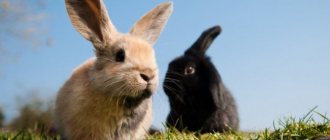Home / Eco life / Village life / Farming / Poultry farming / Pheasants
Back
Published: December 25, 2017
Reading time: 14 min
0
1893
Feed for pheasants must contain sufficient quantities of proteins, fats, carbohydrates, mineral salts and vitamins. Complete food for this type of bird must contain at least 42 grams of protein, 0.2 grams of calcium and 4.7 grams of phosphorus.
- Feeding in summer
- Feeding in winter
- Feeding during egg laying period
- Preparing food at home
- Features of feeding in summer
- Features of feeding in winter
- During the egg laying period
- Self-feeding pheasants
- Warning
It is necessary to feed the bird following a regimen of 3 meals a day: starting from the age of 14 to 60 days, they are fed as many as seven times a day, but then gradually the number of meals is reduced, thereby leaving only the 3 most necessary ones.
If you decide to feed your pheasant with homemade food, you must understand that it is IMPORTANT to take into account the time of year.
Let us consider in detail the standards of substances that a pheasant should receive with food in the summer and winter seasons, as well as the extremely important period of laying eggs.
Feeding in summer
Let's look at the required daily dosages for pheasants in the warm summer months in the table below.
| Type of feed | Ingredients | Norm in grams |
| Concentrated | Corn, wheat, millet | 45 |
| Juicy | Carrots, potatoes, cabbage | 20 |
| Animals | Minced meat, cottage cheese, fish and bone meal | 9 |
| Vitamin | Yeast, fish oil | 2 |
| Mineral | Lime, salt | 3 |
Thus, we see that the daily requirement for an adult bird in summer is about 80 grams.
Selling products
In order to get maximum profit from this poultry industry, it is necessary to use the following marketing methods:
- Sale of eggs. In a year, females are capable of laying many more eggs than would be required for breeding. On average, the price for a dozen fluctuates between 550-600 rubles. Pheasant eggs are especially popular among people with allergic reactions.
- Sales of day old chicks. This will allow you to fully recoup the cost of purchasing equipment for incubation within a month.
- Sale of adults. Grown-up pheasants are purchased by both the owners of various zoos and subsidiary farms. Each bird costs about 700 rubles.
- Sales of meat products. The meat of these birds is considered to be a delicacy, so it is in great demand among gourmets. Today, a kilogram of this valuable product will cost about 800 rubles.
You can make money quickly by selling chicks
Feeding in winter
In the cold season, pheasants need to receive about 80 grams of feed per day per adult.
| Type of feed | Ingredients | Norm in grams |
| Concentrated | Corn, wheat, millet | 50 |
| Juicy | Carrots, potatoes, cabbage | 10 |
| Animals | Minced meat, cottage cheese, fish and bone meal | 6 |
| Vitamin | Yeast, fish oil | 3 |
| Mineral | Lime, salt | 3 |
Reproduction
During the breeding season, pheasants should be given special attention. Only healthy individuals from active parents are selected for mating. The optimal age for females is 8 - 18 months, and for males - from 1 year to 2.5 years.
Breeding season
For breeding, it is important to take into account that pheasants can be monogamous and polygamous. It depends on the breed. Monogamous individuals prefer pair keeping, while polygamous individuals feel great in the company of 3 - 4 birds (1 male and 2 - 3 females). If the selected birds do not show interest in each other, the composition of the pairs is changed.
In the case when the male is extremely active, he is given 3-4 more females.
A month before mating of the adult population, drugs with antibiotics (erythromycin, sodium penicillin, Terramix, Biovita, Biomycin) are added to the food. In this way, egg production is stimulated (20–45%) and the number of fertilized eggs increases.
Breeding under the hen
Pheasants are bad hens. Very rarely, the female sits on the eggs herself. In households, dwarf bantam chickens are used for this purpose. (Pheasant eggs have a very thin shell, and a bantam will not crush them (unlike a regular chicken)). 13 - 14 eggs are usually laid under the hen. This way they will be more densely located and it will be easier for the hen to turn them over in the nest.
After 8 days, the eggs are checked under an ovoscope. On the 20th day, poultry farmers recommend moving the eggs to an incubator. This mixed type of breeding will increase the hatchability of pheasants.
Incubation
Most farmers prefer an incubator for breeding offspring. It is believed that the temperature in the device should be approximately 38⁰C, and the humidity should be up to 80%.
The parameters are individual for each breed, but there are general rules:
- the first two weeks there is high humidity and heat, and ventilation is weak;
- after the second week, the level of ventilation increases, and the temperature and humidity decrease;
- When the chicks begin to squeak (before hatching), the humidity is increased again.
Raising chicks
After pecking, the pheasant chicks are seated in heated cages (with a temperature not lower than 28⁰ C). Stocking density – 30 chicks/sq. meter. After 3 days, the air temperature is lowered by a degree per day (but not lower than 20⁰ C). Heat the room until the pheasants reach two months of age.
Additional lighting is not required, as this can lead to cannibalism among birds.
Feeding during egg laying period
| Ingredient | Norm in grams |
| Corn | 40 |
| Wheat bran | 9 |
| Sunflower cake | 15 |
| Wheat | 20 |
| Bone meal | 5 |
| Fish meal | 10 |
| Fish fat | 1 |
In addition to the above ingredients, the following are added to the feed mixture: 4 g of fungi, namely yeast, 2 g of vegetable oil, preferably sunflower, 7 g of green bluegrass leaves, 23 g of biomycin, 2 g of lime or chalk, 0.3 g of table salt and vitamins (in per 100 grams).
Posted by Danny (@bloody666muse) Dec 16, 2022 at 5:33 PST
Diseases, their treatment and prevention
If an unhealthy individual is detected, care should be taken to isolate it. It is quite simple to distinguish a sick bird:
- poor appetite;
- lethargy and inactivity;
- bad appearance.
All pheasant diseases are divided into 3 groups: infectious, non-infectious, parasitic (invasive).
Infectious
These include the following diseases:
- Laryngotracheitis. Infection can occur through food, equipment or through the air. The virus is carried by both sick birds and those already recovering. The incubation period is 1 week. Health deterioration occurs instantly: appetite disappears, coughing, sneezing, conjunctivitis appears.
- Chicks get sick more often. Mortality reaches 25% of the total livestock. Treatment is prescribed by a veterinarian after a series of studies.
- Smallpox. High mortality rate. The virus causes a rash to appear on the paws and hairless areas of the body. The bird suffocates. Antiviral drugs and Lugol's solution are used as treatment.
Non-contagious
The following diseases are considered non-contagious:
- Dermatitis. An inflammatory process that occurs at the site of injury. It is a red area with crusts. It is difficult to cure because the bird constantly pecks at the wound. To alleviate the condition, antibiotics and vitamins are prescribed.
- Emphysema. When affected by this disease, swellings appear throughout the body, which can move when pressed. The bird does not eat and practically does not move. They are treated with limited mobility and tight bandages with an antiseptic.
Invasive
The following diseases are invasive:
- Scabies. It is characterized by damage to the head, beak, eyes, and later the entire body, by scabies mites. For treatment, it is necessary to remove the affected areas with tweezers and lubricate the wounds with birch tar.
- Infestation with lice beetles. The disease is transmitted through mosquitoes and midges. Birds independently combat this problem by bathing in ash or sand. In extreme cases, insecticidal preparations are used.
Preparing food at home
Some farmers specially prepare compound feed to feed their poultry, which includes:
- 29% cracked corn;
- 11.7% crushed wheat;
- 10% wheat bran;
- 20% crushed soybeans;
- 2% alfalfa flour;
- 11% fishmeal;
- 10% meat flour;
- 5% comes from vitamins and minerals.
This composition turns out to be enriched and balanced. It will be perfect for your pet birds.
Advantages and disadvantages of content
Like any business, pheasant farming has its pros and cons.
The advantages of this business can be called:
- low competition in the sales market (few farmers breed these birds);
- dietary meat, eggs (especially valued in expensive restaurants);
- aesthetic appearance of the flock.
Disadvantages are also present:
- at the initial stage you will have to invest financial resources;
- birds are demanding in terms of feeding, care, and maintenance;
- high price for purchasing livestock.
Features of feeding in summer
In the summer, root vegetables should predominate in the diet of pheasants: beets, turnips, rutabaga, carrots, which are either grated or cut into large pieces.
Pheasants and cabbage bite well. They love pears, apples, and berries. Among the greens, it is necessary to give nettle, since it is not only a high-vitamin food, but also a medicinal plant.
Mineral food is also very important for pheasants, so they are provided with crushed shells, chalk, charcoal, and dried and crushed eggshells. They also produce burnt bones, coarse sand and gravel with a diameter of up to 7 mm. All this should be in separate feeders.
Reviews
Recently, due to health conditions, I have been forced to strictly monitor my diet. Pheasant meat and eggs are very helpful. Just imagine: the fat content of meat is 0.5% (this is compared to chicken’s 28%). I wouldn't trade it for anything else!
Kuznetsova Daria, 45 years old, Ekaterinburg
Before retirement, my father went hunting and sometimes brought pheasants. I remember the first time I tried pheasant meat. An indescribable feeling! It has its own unique taste and smell. As I got older, I became interested in whether it was possible to raise pheasants at home. So: now I am the owner of a small pheasant farm. True, I raise “simple” Hunting Pheasants, but I do what I love.
Prosvetova Polina, 27 years old, Rostov-on-Don
The visiting wife was treated to a delicacy - pheasant meat. After that she buzzed all over my ears, saying I want more. I read the literature, thought, assessed my capabilities... and bought several pairs of pheasants for myself. We are slowly raising young animals and looking for buyers. And there is still some left for myself. The wife is happy.
Chekhov Igor, 36 years old, Pskov
Features of feeding in winter
With the onset of cold weather, the bird needs to eat up to 70 grams of feed daily and an additional 10 grams of juicy additives: for this you can take grated raw carrots or cabbage. An additional 12 grams is recommended by mixing in animal feed and vitamins. Animal nutrition is presented in the form of cottage cheese, minced meat, fish and bone meal. In no case should vitamins be excluded, because birds kept in captivity cannot independently obtain them in the required quantities. As a rule, Omega 3 or fish oil is used for this, which is added in an amount of 2 g, and ascorbic acid (4–5 g). From them, birds receive vitamins B12 and B6, as well as vitamin C, which leads to strengthening the birds’ immunity. To normalize digestion, substances such as amylase and lipase are used.
Posted by Olga (@agneshca56) Dec 22, 2022 at 12:00 PST
Appearance description
Of all the variety of birds, pheasants stand out for their gracefulness and beautiful plumage.
Appearance
Males have bright plumage and a long tail. The color of the feather depends on the habitat. This is because the order Galliformes, which includes pheasants, is one of the most numerous in Eurasia. Hence the difference in color: from brown, red, lilac to green, blue.
The total body length of the male is up to 1 m, and the tail length is 60 cm.
The color of females is much more modest: gray with brown or black spots. This is due to the fact that in their natural habitat, females are forced to hide, protecting their offspring from predators. Modest coloring helps with this.
A chicken is approximately half the size of a rooster.
Character
Breeding pheasants at home for beginners has its own aspects. It is important to know that these are extremely shy birds. At the slightest perceived danger, or any sound, they quickly run away or fly up a tree. (Although representatives of Pheasants are much worse at flying.)
In addition, “royal” birds are avid fighters. Pheasants should not be kept with other species of birds. This can be fatal for a weaker opponent. It is also prohibited to place adult livestock with young animals. Unless these are young animals raised by the pheasant herself.
Often a fight is inevitable. In small enclosures with a large number of individuals, even females fight.
To avoid such incidents, poultry farmers suggest putting special glasses on the bully. The only disadvantage of this method is that over time the birds will learn to get rid of the interference.
Another important quality that poultry farmers should remember is the poor memory of their charges. The female can easily lose the nest simply by wandering away. After this, she will begin to rush throughout the entire room. So it’s worth planning out the enclosure so you don’t have to look for eggs later.
Productivity
Raising pheasants is a profitable business. Birds quickly reach the required weight. After 4–5 months of fattening, they can be sent for slaughter. The yield of pure products will be about 70 - 80%.
The egg production of females per season reaches 50 eggs. The duration of oviposition is about 3 months. The average weight of an egg is 30 grams.
Self-feeding pheasants
When pheasants are kept in pens outside, they can obtain part of the food, as in their natural habitat. They happily feast on the greenery of the plants in the enclosure. Moreover, they peck insects and their larvae that enter the territory. This feeding feature can play into the owners’ hands when using pheasants to control pests in the garden. Pheasants can also peck even small rodents: voles, mice.
Useful tips
Beginning farmers need to know some of the intricacies of bird breeding.
- 1. To build a poultry house or aviary, choose a dry place, protected from drafts.
- 2. There is no need to clutter the area with unnecessary objects, the birds will become cramped and their feathers will break off.
- 3. The enclosure needs to be cleaned and the bedding changed in a timely manner.
- 4. Feeders are emptied of food debris and the water is constantly changed.
- 5. Males can only be kept together until they are one year old. Adult birds will fight for territory and the female may injure each other.
- 6. Beginning breeders are recommended to have one pair and try to observe the behavior in order to organize comfortable conditions.
- 7. Birds need to remove broken feathers. It needs to be carefully pulled out. the procedure is painless for the pheasant. a new healthy feather will grow in place.
- 8. If the bird has become lethargic and looks sick, move it away from the others so as not to infect the entire poultry house and contact a veterinarian.
- 9. You should buy eggs and chicks for breeding only from trusted farms with a good reputation.
Breeding pheasants for the sale of meat, eggs or young chicks is a profitable business that does not require special knowledge or large financial costs. The products are quite expensive and all maintenance costs quickly pay off.
Warning
In conclusion, I would like to remind you that healthy pheasants should have a thin layer of subcutaneous fat - it protects the bird from cooling and helps it maintain a constant body temperature. Excessive obesity is harmful to the bird's body.
Choose high-quality, fresh ingredients and feed. If you purchase ready-made feed, contact only trusted suppliers. Otherwise, you can cause upset in the bird's gastrointestinal tract, which can even lead to death.
Balanced food and proper nutrition will allow you to raise healthy and beautiful birds.
Acquisition
Although pheasant breeding is not widespread, there are still farms in Russia that specialize in this. They are located in Tula, Vologda, Serpukhov, Saratov, Belgorod, Rostov-on-Don, Samara. In the eastern regions of Russia there is the possibility of purchasing in Novosibirsk, Omsk, Sayanogorsk, Komsomolsk-on-Amur.
What is better to buy
Experienced poultry farmers advise choosing young birds when purchasing. This will give a greater chance that the offspring will grow up healthy. Birds over 2.5 years old do not need to be taken. The productivity of such birds is already running out.
Where to buy, price
You need to buy pheasants from breeders, nurseries or from a neighboring farmer. It is important to source birds from different sellers to avoid inbreeding. After all, this can weaken the birds’ immunity or even lead to infertility.
For starters, it’s good to buy 2 – 4 pairs of birds. In this way, you can practice feeding and caring skills. After the farm strengthens its position, the number of birds will increase.
Monitoring prices for pheasant in Russia presents the following indicators:
| Age | Price |
| Up to 3 months | 200 – 400 rub. |
| Up to 6 months | 500 rub. |
| 9 months | Up to 800 rub. |
| 1 year | From 550 rub. |
| 2 years | On average 850 rubles. |
| Egg | 75 – 120 rub./pcs. |
How to choose healthy chicks
When purchasing, you need to pay attention to a number of characteristics:
- dry beak, without thickening or spots (evidence of a healthy bird);
- compliance with breed data (if the color of a pheasant does not meet the standard, it is a hybrid that is not subject to further breeding);
- clean feathers around the cloaca;
- fleshy chest (without excess fat and protruding bones).
How to give water
As mentioned earlier, baby pheasants must first be taught to drink water by dipping their beaks into a container of liquid. In the future, you need to remember one more extremely important rule about watering for these birds: they flatly refuse to drink warm water, so it is recommended to place drinking bowls for them in shaded places. In addition, pheasants really do not like dirty water, so try to change it after each feeding.
We hope that this article helped you find answers to all your questions regarding feeding pheasants. Love and attention towards your pets, as well as careful adherence to all the rules for keeping these birds, will certainly lead to the fact that breeding pheasants will bring you the expected benefits.
A little history
The first pheasant farms appeared in our country in the 19th century. They brought good profits, since pheasants were not cheap, and only wealthy people could enjoy them. In addition, this wild bird was bred for royal hunting and decoration of palace gardens. In nature, the pheasant bird can be found in the North Caucasus and on the western shore of the Caspian Sea. According to rough estimates, 10-15 thousand individuals live in central Russia. Their numbers can be compared to one farm in Europe.
For beginning farmers, pheasant farming as a business opens up broad development prospects. Baked pheasant can be found on the menu of almost every elite restaurant. Recently, pheasant hunting has become very popular. Hunting farms that organize such entertainment for corporate clients buy live birds at a decent price.
What not to feed
The digestive system of pheasants is quite vulnerable and does not accept every product that is suitable for feeding other birds. Here is an approximate list of foods that can harm these birds when eaten:
- green potatoes and peelings;
- any fried foods;
- a variety of large seeds (sunflower, pumpkin, etc.);
- black bread;
- excessively salty foods;
- the mash is too wet;
- millet.
